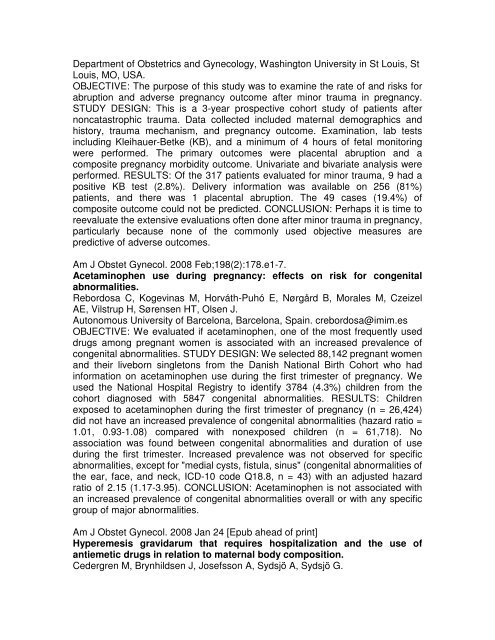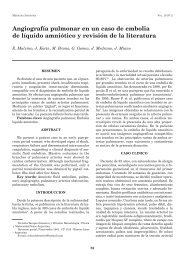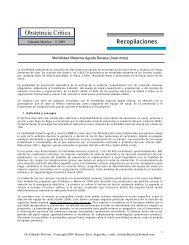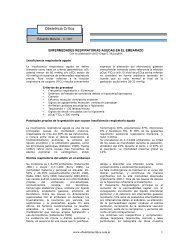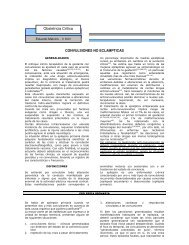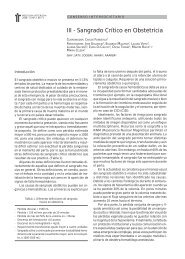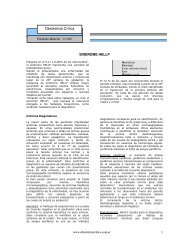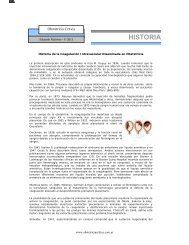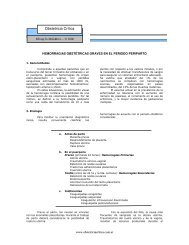Department of Obstetrics and Gynecology, Washington University in St Louis, StLouis, MO, USA.OBJECTIVE: The purpose of this study was to examine the rate of and risks forabruption and adverse pregnancy outcome after minor trauma in pregnancy.STUDY DESIGN: This is a 3-year prospective cohort study of patients afternoncatastrophic trauma. Data collected included maternal demographics andhistory, trauma mechanism, and pregnancy outcome. Examination, lab testsincluding Kleihauer-Betke (KB), and a minimum of 4 hours of fetal monitoringwere performed. The primary outcomes were placental abruption and acomposite pregnancy morbidity outcome. Univariate and bivariate analysis wereperformed. RESULTS: Of the 317 patients evaluated for minor trauma, 9 had apositive KB test (2.8%). Delivery information was available on 256 (81%)patients, and there was 1 placental abruption. The 49 cases (19.4%) ofcomposite outcome could not be predicted. CONCLUSION: Perhaps it is time toreevaluate the extensive evaluations often done after minor trauma in pregnancy,particularly because none of the commonly used objective measures arepredictive of adverse outcomes.Am J Obstet Gynecol. <strong>2008</strong> Feb;198(2):178.e1-7.Acetaminophen use during pregnancy: effects on risk for congenitalabnormalities.Rebordosa C, Kogevinas M, Horváth-Puhó E, Nørgård B, Morales M, CzeizelAE, Vilstrup H, Sørensen HT, Olsen J.Autonomous University of Barcelona, Barcelona, Spain. crebordosa@imim.esOBJECTIVE: We evaluated if acetaminophen, one of the most frequently useddrugs among pregnant women is associated with an increased prevalence ofcongenital abnormalities. STUDY DESIGN: We selected 88,142 pregnant womenand their liveborn singletons from the Danish National Birth Cohort who hadinformation on acetaminophen use during the first trimester of pregnancy. Weused the National Hospital Registry to identify 3784 (4.3%) children from thecohort diagnosed with 5847 congenital abnormalities. RESULTS: Childrenexposed to acetaminophen during the first trimester of pregnancy (n = 26,424)did not have an increased prevalence of congenital abnormalities (hazard ratio =1.01, 0.93-1.08) compared with nonexposed children (n = 61,718). Noassociation was found between congenital abnormalities and duration of useduring the first trimester. Increased prevalence was not observed for specificabnormalities, except for "medial cysts, fistula, sinus" (congenital abnormalities ofthe ear, face, and neck, ICD-10 code Q18.8, n = 43) with an adjusted hazardratio of 2.15 (1.17-3.95). CONCLUSION: Acetaminophen is not associated withan increased prevalence of congenital abnormalities overall or with any specificgroup of major abnormalities.Am J Obstet Gynecol. <strong>2008</strong> Jan 24 [Epub ahead of print]Hyperemesis gravidarum that requires hospitalization and the use ofantiemetic drugs in relation to maternal body composition.Cedergren M, Brynhildsen J, Josefsson A, Sydsjö A, Sydsjö G.
Division of Obstetrics and Gynecology, Department of Clinical and ExperimentalMedicine, Faculty of Health Sciences, University of Linköping, Sweden.OBJECTIVE: The purpose of this study was to assess whether maternalprepregnancy body mass index was associated with the use of antiemetic drugsin early pregnancy and/or with the occurrence of hyperemesis gravidarum.STUDY DESIGN: A retrospective, population-based, cohort study. Women whodelivered singleton infants (n = 749,435) from 1995-2003 were evaluatedconcerning the use of antiemetic drugs in early pregnancy (data available from1995). Women who delivered singleton infants (n = 942,894) from 1992-2001were evaluated concerning hospitalization because of hyperemesis gravidarum(data available until 2001). Adjusted odds ratios were determined by Mantel-Haenszel technique and were used as estimates of relative risk (RR). RESULTS:Underweight pregnant women were more likely to use antiemetic drugs (RR,1.19; 95% CI, 1.14-1.24) and to become hospitalized for hyperemesisgravidarum (RR, 1.43; 95% CI, 1.33-1.54) compared with ideal weight women.Obese women were less likely to use antiemetic drugs (RR, 0.93; 95% CI, 0.89-0.97) and less likely to require hospitalization because of hyperemesis (RR, 0.90;95% CI, 0.85-0.95) compared with women with an ideal body mass index.CONCLUSION: The use of antiemetic drugs and the occurrence of hyperemesisgravidarum are related to maternal body composition.Clin Exp Obstet Gynecol. 2007;34(4):252-3.Spontaneous heterotopic pregnancy: a successful outcome.Seoud AA, Saleh MM, Yassin AH.Obstetrics and Gynaecology Department, Rochdale Infirmary, Whitehall Street,Rochdale, Lancashire, UK.Spontaneous heterotopic pregnancy is rare condition. We are reporting a casewhere the ectopic component was treated successfully laparoscopically and theintrauterine pregnancy continued to term uneventfully.Clin Exp Obstet Gynecol. 2007;34(4):250-1.Cholecystitis during pregnancy. A case report and brief review of theliterature.Chloptsios C, Karanasiou V, Ilias G, Kavouras N, Stamatiou K, Lebren F.Surgery Department, General Hospital of Thebes, Greece.Cholecystitis is an inflammation of the gallbladder caused by obstruction of thecystic duct. A gallstone usually causes the obstruction (calculus cholecystitis).However, in some cases the obstruction may be acalculous or caused by sludge.The clinical course of biliary sludge varies, from complete resolution togallbladder obstruction. This obstruction can result in gallbladder distension andacute cholecystitis. When inflammation occurs it could either be aseptic orbacterial. Biliary disease during pregnancy is relatively rare and occurs mainlyduring the last trimester. Whether women who are pregnant or have multiplepregnancies are more likely to develop stones or whether they are simply moresymptomatic with stones is unknown. We present a 33-year-old obese pregnantwoman with fever, moderately elevated bile acids, and leukocytosis in the 28th
- Page 1 and 2: Obstetricia CríticaEduardo Malvino
- Page 3 and 4: gestational age at delivery, Apgar
- Page 5 and 6: Maternal risk factors associated wi
- Page 7: exclusive categories: 1) bleeding r
- Page 11 and 12: as uncommon as primary synovial sar
- Page 13 and 14: Cardiac Troponin I Elevation After
- Page 15 and 16: significant increase in carbohydrat
- Page 17 and 18: of one per 1500 pregnant women. Cal
- Page 19 and 20: Background: To investigate the rela
- Page 21 and 22: PowerLab hardware unit and Chart v3
- Page 23 and 24: Prophylactic antibiotics for the pr
- Page 25 and 26: years old (n = 23,921). Univariate
- Page 27 and 28: five women uses FDA C, D and X drug
- Page 29 and 30: and complicated. CONCLUSION: Irresp
- Page 31 and 32: clinically effective. Nevertheless,
- Page 33 and 34: Obstetrics and Gynecology Departmen
- Page 35 and 36: Pregnancy-induced severe gestationa
- Page 37 and 38: penicillin or ampicillin, whereas 3
- Page 39 and 40: Abetalipoproteinemia complicating t
- Page 41 and 42: case of acute abdominal pain, abdom
- Page 43 and 44: Callaway LK, Lawlor DA, McIntyre HD
- Page 45 and 46: ketoacidosis during induction of la
- Page 47 and 48: and low platelets (HELLP) syndrome.
- Page 49 and 50: Division of Reproduction and Endocr
- Page 51 and 52: simulation center, and to teamwork
- Page 53 and 54: significantly associated with psori
- Page 55 and 56: episiotomy and prophylactic oxytoci
- Page 57 and 58: ecent obesity epidemic has had a pr
- Page 59 and 60:
guidelines in 2002. However, the di
- Page 61 and 62:
need for intensive neonatal care, h
- Page 63 and 64:
mEq/l) metabolic acidosis. Other et
- Page 65 and 66:
Acta Obstet Gynecol Scand. 2008;87(
- Page 67 and 68:
etrospective review of pregnancies
- Page 69 and 70:
Maternal obesity and pregnancy comp
- Page 71 and 72:
interval 3.78-5.30) and severe obst
- Page 73 and 74:
of GDM. Methods: 1,662 pregnant wom
- Page 75 and 76:
Registers. POPULATION: All pregnant
- Page 77 and 78:
J Reprod Med. 2008 May;53(5):365-8.
- Page 79 and 80:
egarding cervical cancer screening
- Page 81 and 82:
College of Surgeons in Ireland, Dub
- Page 83 and 84:
maternal morbidity has increased bo
- Page 85 and 86:
increased uterine activity was rela
- Page 87 and 88:
options.Journal of Perinatology adv
- Page 89 and 90:
atio, 1.73; 95% CI, 1.11-2.69). Thi
- Page 91 and 92:
discharge at site of perineal repai
- Page 93 and 94:
Thirty-one other patients refused t
- Page 95 and 96:
Department of Obstetrics and Centre
- Page 97 and 98:
developed any new problems. CONCLUS
- Page 99 and 100:
It seems to be safe to continue bre
- Page 101 and 102:
colonization in a subsequent pregna
- Page 103 and 104:
Crude and adjusted odds ratios were
- Page 105 and 106:
the subsequent development of ESRD.
- Page 107 and 108:
Acta Obstet Gynecol Scand. 2008 Sep
- Page 109 and 110:
OBJECTIVE: To investigate pregnancy
- Page 111 and 112:
OBJECTIVE: To compare the perinatal
- Page 113 and 114:
exceptionally rare. CASE: A 23-year
- Page 115 and 116:
CONCLUSION: This case demonstrates
- Page 117 and 118:
peripartum hysterectomy included ce
- Page 119 and 120:
BMJ. 2008 Sep 8;337:a1397. doi: 10.
- Page 121 and 122:
Lancet. 2008 Sep 17. [Epub ahead of
- Page 123 and 124:
Obstet Gynecol. 2008 Oct;112(4):951
- Page 125 and 126:
Additionally, the effects of distur
- Page 127 and 128:
analyzed. Initial echocardiographic
- Page 129 and 130:
pathologic or anatomically anomalou
- Page 131 and 132:
Eur J Obstet Gynecol Reprod Biol. 2
- Page 133 and 134:
chorioamnionitis; and (3) in contra
- Page 135 and 136:
underlying conditions related to st
- Page 137 and 138:
third trimester of pregnancy.BMJ. 2
- Page 139 and 140:
Texas Health Science Center, Housto
- Page 141 and 142:
preterm birth before 34 weeks (P
- Page 143 and 144:
cases. Most patients (91%) received
- Page 145 and 146:
Ultrasound Obstet Gynecol. 2008 Nov
- Page 147 and 148:
Maggard MA, Yermilov I, Li Z, Magli
- Page 149 and 150:
Clinical and Population Health, Per
- Page 151:
the biologic mechanism is unclear,


